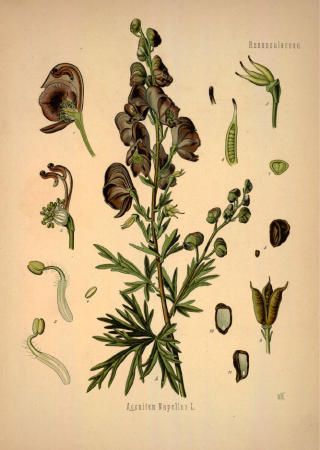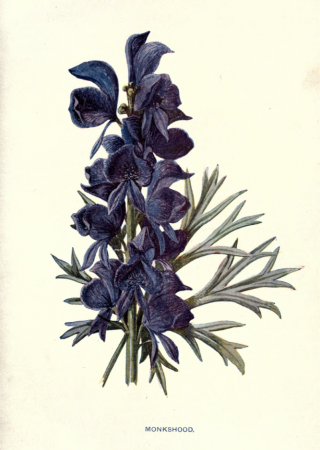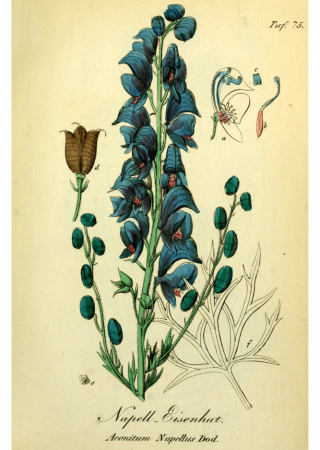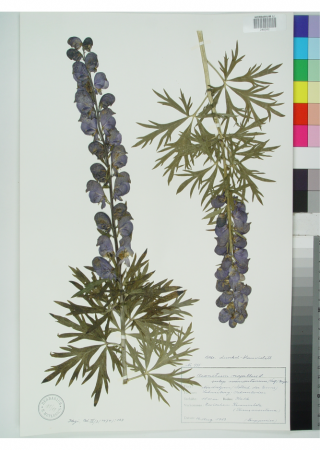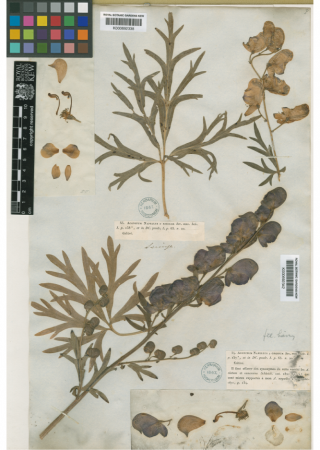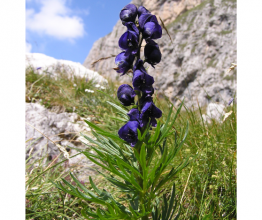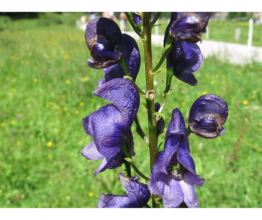Monkshood/Venus' Chariot
- ...a fatal dose for a human is only 1-5 milligrams of aconitine, the poison in monkshood?
- ...the alkaloid aconitine was used during WWII by the Germans to poison bullets?
- ...aconitine was in common use in ancient Greece to poison tips of arrows and spears?
- ...aconitine was used to kill wolves? This is the source of one of the plant’s folk names – wolfsbane.
- ...aconitine was used by George Henry Lamson in 1881 to poison his brother-in-law, so that Lamson would acquire an inheritance?
- ...aconitine became well known due to its appearance in Lord Arthur's Crime, by Oscar Wilde, in 1891?
- ...aconitine from monkshood also played a significant role in the novel Ulysses, by James Joyce, an Irish author who wrote this novel in which Leopold Bloom’s father used a liniment containing aconitine to commit suicide.
- ...in 1953, the Soviet biochemist and poison researcher Grigorij Majranovskij used aconitine in experiments on prisoners in secret laboratories of the NKVD (forerunner of the KGB, the Soviet Union's secret police) and later admitted to killing about ten prisoners with this poison?
- ...in 2009, Lakhvir Singh of Feltham (west London, Great Britain) used aconitine mixed into food to poison her ex-lover (who died of the poison) along with his fiancé, and was sentenced to life in prison for the crimes?
Basic information:
Division – angiosperms (Magnoliophyta)
Class – eudicots (Rosopsida)
Maximum height – 150 cm
Distribution – Czech Republic
Type of poison – alkaloids
Distinguishing marks:
A perennial, 50-150 cm high, growing stalks with pinnatisect leaves. Flowers are blue and helmet-shaped. It grows near streams in the mountains and foothills of Europe.
Monkshood is described in some literature as the most poisonous plant in Europe. It is classed into the buttercup or crowfoot (Ranunculaceae) family, and contains the alkaloid aconitine. 10-20 minutes after ingestion, the person experiences burning and itching in the mouth, fingers and toes, then in the skin all over the body. Later come goose bumps, unbearable pain and ague. Further symptoms are nausea, vomiting, diarrhea, headaches, painful throat, neck, back and heart, droning in the ears, yellow-green vision and excessive urination. Larger doses can lead to initial rapid breathing, followed by paralysis of the lungs and heart.

